Corky-Bark Fungus (Diplodia tumefaciens) Galls on Quaking Aspen
Looking at Corky-Bark Fungus galls on Quaking Aspens in Southwestern Colorado
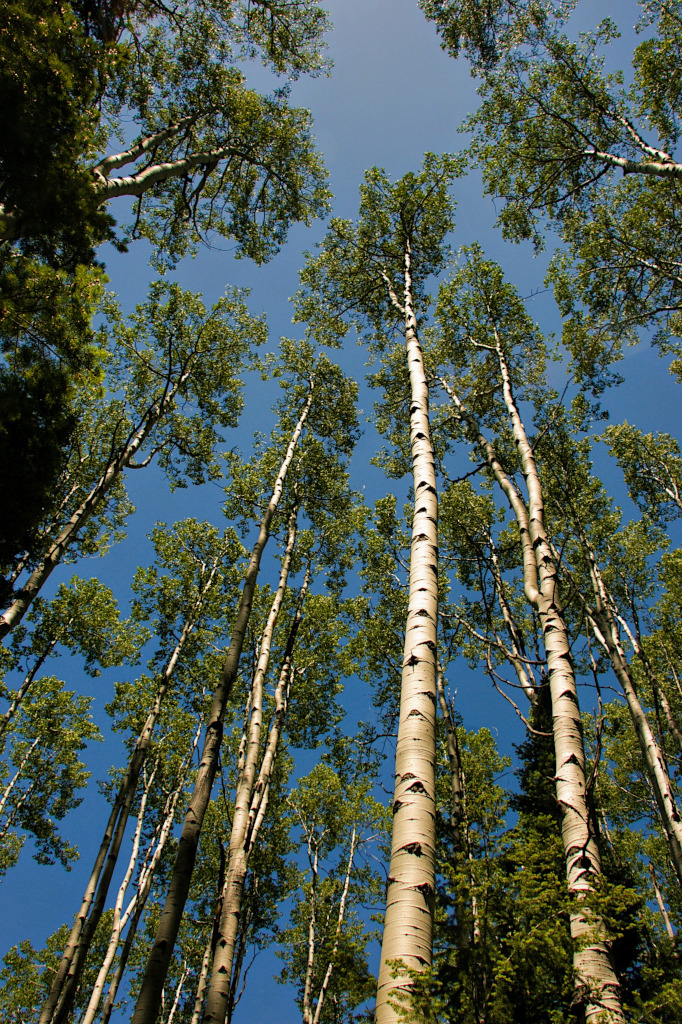 The trunks of the Aspens were beautiful in the morning light. You can see the normal dark, smooth, crescent-shaped marks on their trunks.
The trunks of the Aspens were beautiful in the morning light. You can see the normal dark, smooth, crescent-shaped marks on their trunks.
I recently (June 15, 2021) spent the morning walking along a trail on the Dolores River. The trail took me through a stand of Quaking Aspen Trees. The weather was beautiful, and the trunks of the Aspens seemed to glow in the morning sunlight.
I noticed that some of the Aspens had large, black swellings on their trunks. These were not the normal, flat, crescent-shaped marks that I expected to see on Aspens. These were large, protruding, wart-like growths on the Aspens. These swellings were rough, as if the tree’s wood had turned black and burst forth through the smooth outer bark of the tree.
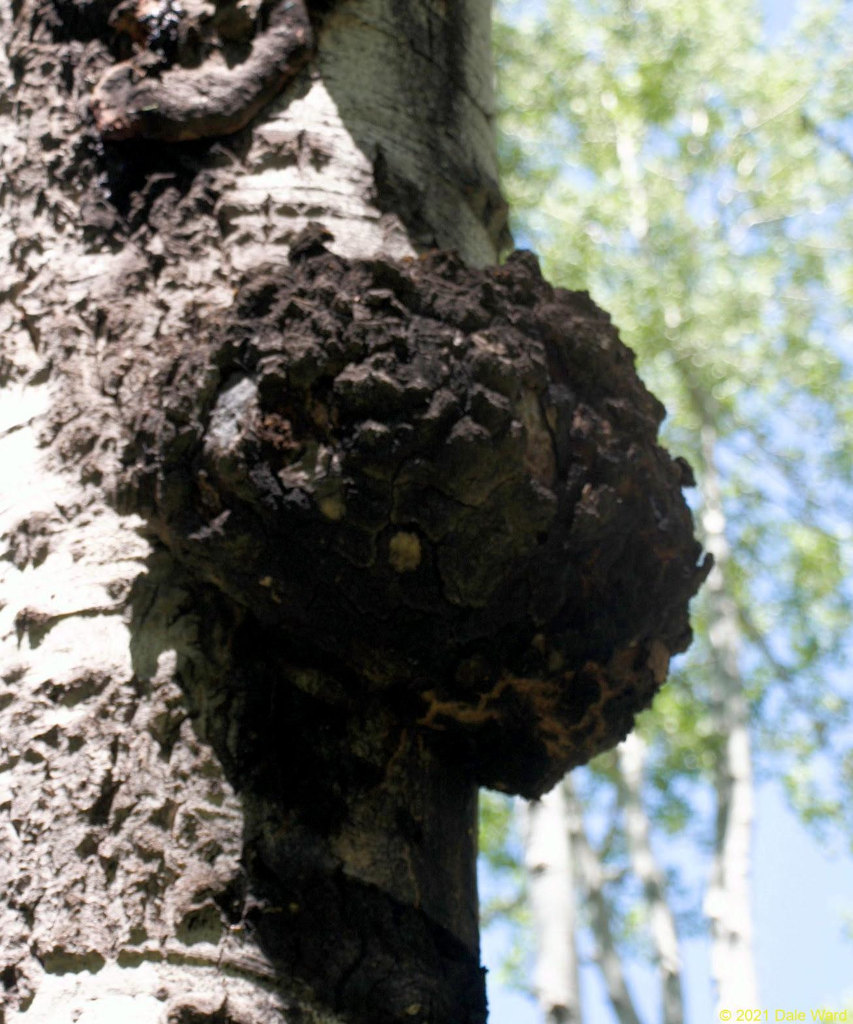 *Corky-Bark Fungus (Diplodia temefaciens) gall on the trunk of a Quaking Aspen. This gall was about 20 cm in diameter.
*Corky-Bark Fungus (Diplodia temefaciens) gall on the trunk of a Quaking Aspen. This gall was about 20 cm in diameter.
I think these are galls created by a fungus - Diplodia tumefaciens.
It seemed as though the distribution of the gall-infected Aspens amongst was clumped - if I found one tree with these galls, there was a good chance that I’d find more on the nearby trees. Was that an artifact of how the fungus spreads? Either via airborne spores, or short-ranged insect vectors? Or was the distribution of infected trees caused by some environmental stressor, which made the trees in a given locale more susceptible to infection?
The galls looked like big, black warts on the Aspen trees. Some trees had multiple galls on their trunks. In these trees, the galls seemed most likely to occur directly one above the other, vertically up the trunk. I wonder if the fungus was following the tree’s xylem and phloem.
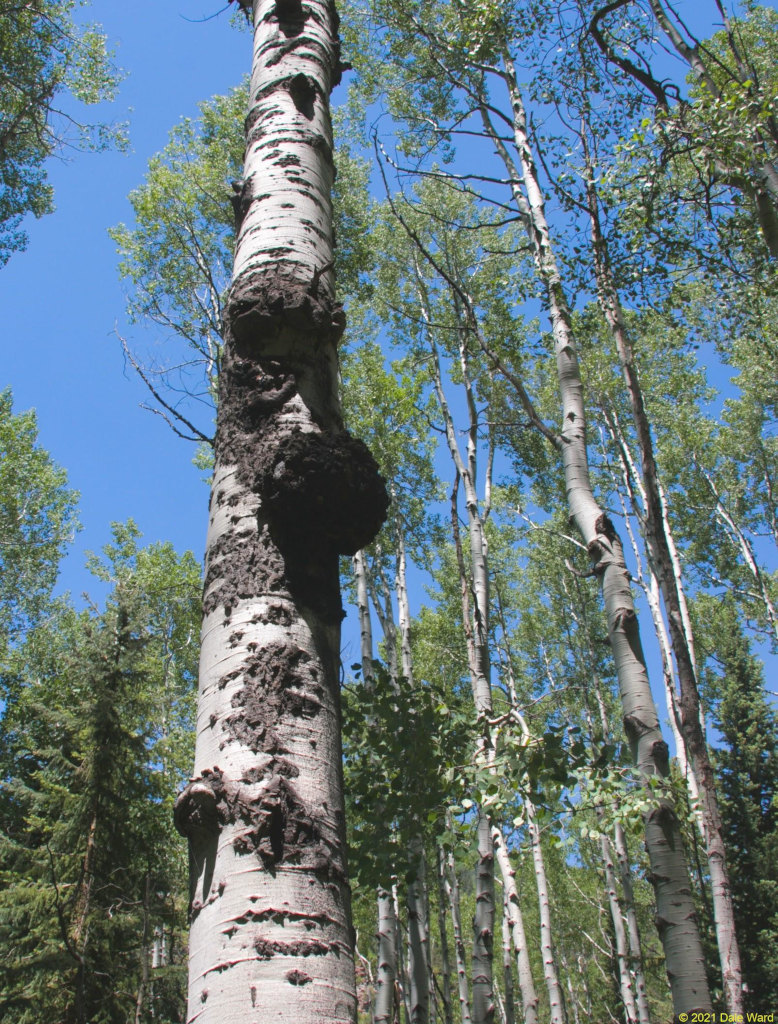 Corky-Bark Fungus galls on Quaking Aspen trunk. Some trees, such as this one, had multiple galls on their trunk. The galls seemed to tend to be organized in vertical lines on the trunks, as if the fungus had followed the tree’s xylem up the trunk.
Corky-Bark Fungus galls on Quaking Aspen trunk. Some trees, such as this one, had multiple galls on their trunk. The galls seemed to tend to be organized in vertical lines on the trunks, as if the fungus had followed the tree’s xylem up the trunk.
Some of the galls were oozing a treacly fluid. I’m not sure if that fluid was tree sap, if it was an exudate from the Diplodia fungus, or if it was the result of a secondary infection, such as a yeast.
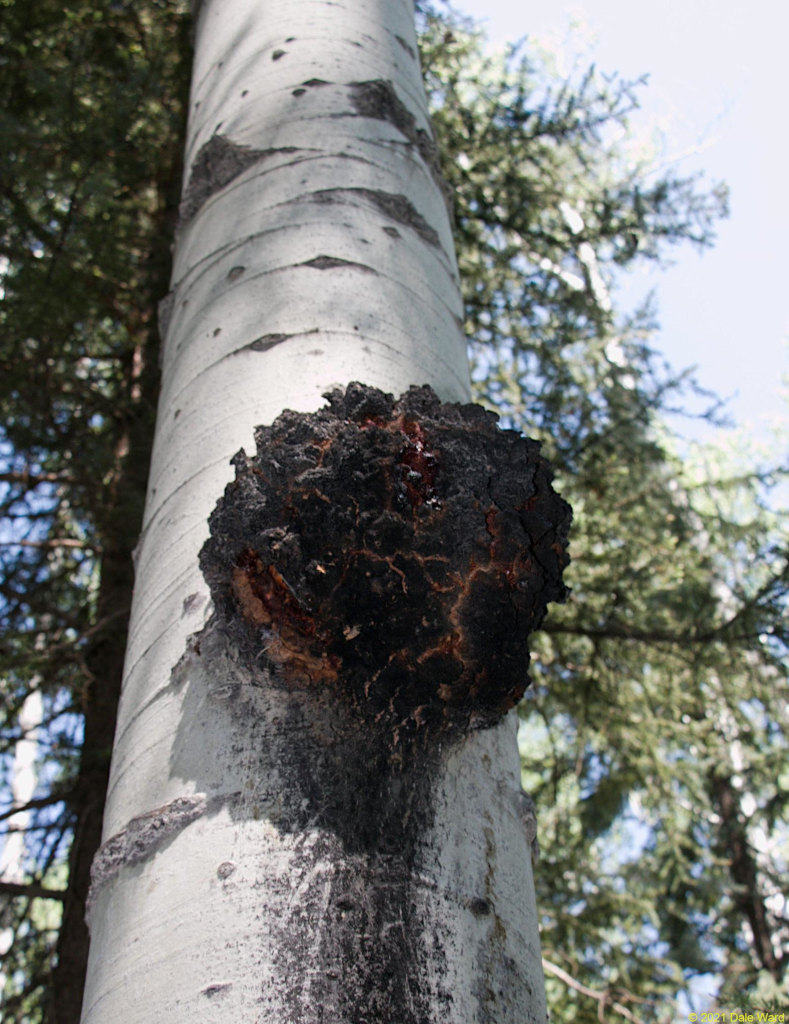 Another view of a Corky-Bark Fungus gall on a Quaking Aspen trunk. You can see that this one is oozing a fluid, presumable sap from the Aspen.
Another view of a Corky-Bark Fungus gall on a Quaking Aspen trunk. You can see that this one is oozing a fluid, presumable sap from the Aspen.
In his book Plant Galls of the Western United States, Ronald Russo mentions that the lesions these Corky-Bark Fungus galls create can make the Aspens susceptible to secondary invaders, such as beetles and other fungi. Perhaps one of those “secondary invaders” was responsible for the liquid that some of the galls oozed.
Some of the Aspens that I looked at had large cavities on their trunks, such as the Aspen in the photo below. That cavity would certainly be a way for creatures such as beetles to get into the tree.
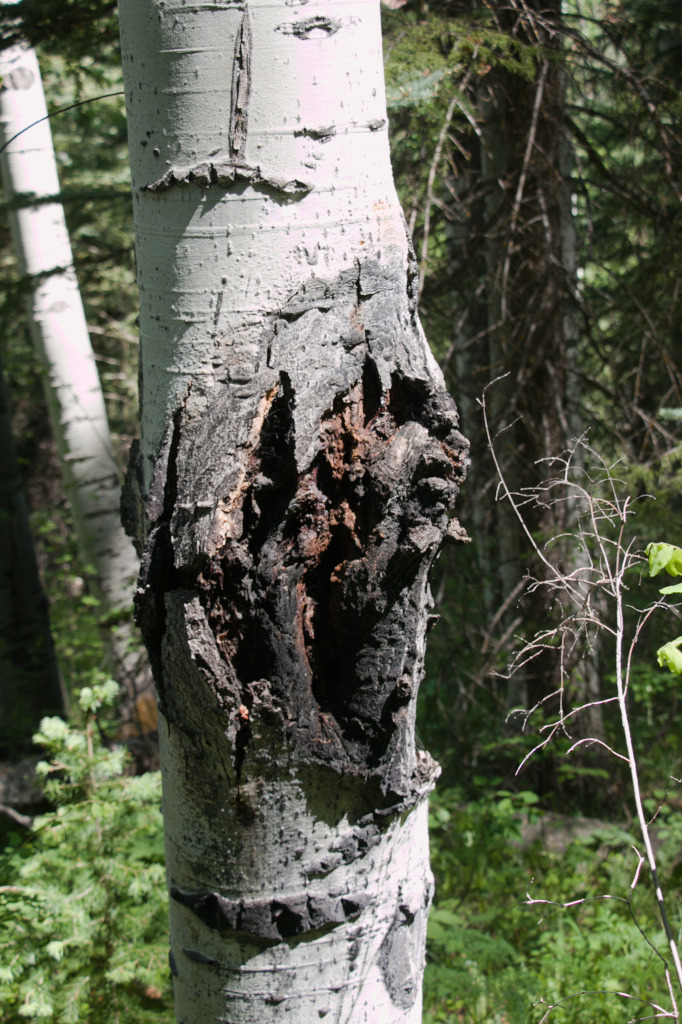 A “burst” Corky-Bark Fungus gall?
A “burst” Corky-Bark Fungus gall?
I wonder if these cavities was caused by the Corky-Bark Fungus gall. The galls look like slow-motion “exit wounds” to me…is that what they are? The fungus opens up the trunk of the tree to allow the fungal spores to pour out, or for an insect vector to carry the spores to another tree?
I’ve hot far more questions than answers about these galls.
Sources:
Russo, Ronald A. 2021. Plant Galls of the Western United States (Princeton Field Guides, 142). Princeton University Press. ISBN-10: 0691205760.